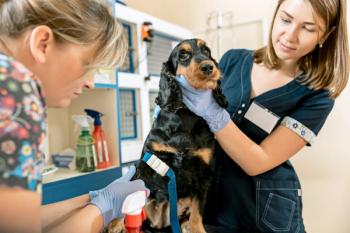
Whats the right diagnosis for emotionally struggling veterinarians?
Analysis reveals low overall burnout in the profession, points to factors that affect it.
At the beginning of our research into the economics of the veterinary profession, we determined that unemployment and underemployment were important indicators of excess capacity in the profession. We developed a survey to measure these two key economic indicators and included questions pertaining to factors affecting either one. Of course, demographic factors such as age, practice type and location can affect unemployment and underemployment, but we also looked at health. Simply put, better health may be associated with less unemployment and less underemployment.
The results of our first employment survey found that roughly 80 percent of veterinarians consider themselves fairly healthy-a four or five on a five-point scale. This low level of variation did little to explain unemployment and underemployment.
For the 2015 Employment Survey we decided to dig a little deeper. Participants in the AVMA's Future Leaders Program, already working on a study of veterinary wellness, provided us with information on a wellness tool used in numerous other professions. That information helped us tie the wellness of veterinarians to that of other professionals. The Professional Quality of Life Scale Survey solicits responses that can be used to compute a “burnout” score. Standardized scores provide for comparison with other professions.
With input from more than 3,000 respondents, the findings from the 2015 AVMA Employment Survey indicate that the burnout score for 95 percent of the respondents (within two standard deviations) is low to average (see Table 1).
This seems to be in sharp contrast to the recent article by Randall Nett in the Centers for Disease Control and Prevention's Morbidity and Mortality Weekly Report, which concluded that:
> 13 percent of all male veterinary respondents and 24 percent of all female veterinary respondents are currently being treated for mental health conditions or problems
> 10 percent of respondents experienced some kind of serious psychological distress
> 17 percent of respondents have experienced suicidal ideation since leaving veterinary school.1
The Nett study noted that the findings were subject to at least two limitations: “First, the small number of veterinarians who responded compared with the number of those potentially eligible increases the likelihood of nonresponse bias,” the authors state. “Second, the possibility exists for social desirability bias. Both of these factors could lead to overestimation or underestimation of the actual prevalence of risk factors for suicide among U.S. veterinarians.”
Another caveat is that the Nett study provides measures of mental health problems in the profession, while the 2015 AVMA Employment Survey provides a measure of burnout. While related, these may well be different measures and may not be highly correlated. An additional difference is that the burnout score is a current measure, while two of the Nett measures cover past experience.
An important result of the AVMA study was the evaluation of factors related to burnout. These factors are provided in Table 2 for five different graduation years. The constant (first row in table) provides the starting point estimate for the burnout score. All of the other rows are factors that are statistically significant in their relationship with the burnout score for at least one of the graduating classes. A negative number means the factor is negatively associated with burnout; a positive number indicates a positive association.
For instance, for recent graduates (2013 and 2009), an individual health self-assessment is negatively associated with burnout. The healthier a veterinarian feels, the less he or she is burned out. Only one variable was significant for the majority of graduating classes: a desired change in hours worked (underemployment). The desire to work less hours for less pay (negative underemployment) was associated with greater burnout in younger veterinarians.
After completing our analysis, we've concluded that the most important finding in our burnout score data is that burnout begins to increase at graduation, peaks at five years after graduation, and then declines during the remainder of the veterinarian's career. Our analysis also indicates the complicated nature of the factors that affect burnout, as these factors change over time.
The bottom line is that we simply don't have enough information yet to study what may be a problem that is, as yet, not well-defined. We need to further explore the relationship between burnout and treatment for mental health conditions, serious psychological distress and suicidal ideation.
Like so many of the potential complications we have uncovered in our analysis of the economics of the profession, the mental and physical health of veterinarians, while not currently found to be a problem in general, may well be concentrated in a group of veterinarians with specific characteristics. If that's the case, then examining the entire profession may hide the problem. Persistent collection of specific measures and the potential factors that affect those measures will be instrumental in both identifying specific health problems and creating strategies that might be useful in abating those problems.
Since healthy veterinarians help ensure a healthy profession, further research will provide critical information that can be used to find successful strategies to address the troubling dilemma of burnout and mental health.
Reference
1. Nett RJ, Witte TK, Holzbauer SM, et al. Notes from the field: Prevalence of risk factors for suicide among veterinarians-United States, 2014. Morb Mortal Wkly Rep 2015;64(6):159.
Dr. Mike Dicks is director of the AVMA's Veterinary Economics Division. Dr. Bridgette Bain is an analyst in the AVMA's Veterinary Economics Division.
Newsletter
From exam room tips to practice management insights, get trusted veterinary news delivered straight to your inbox—subscribe to dvm360.




